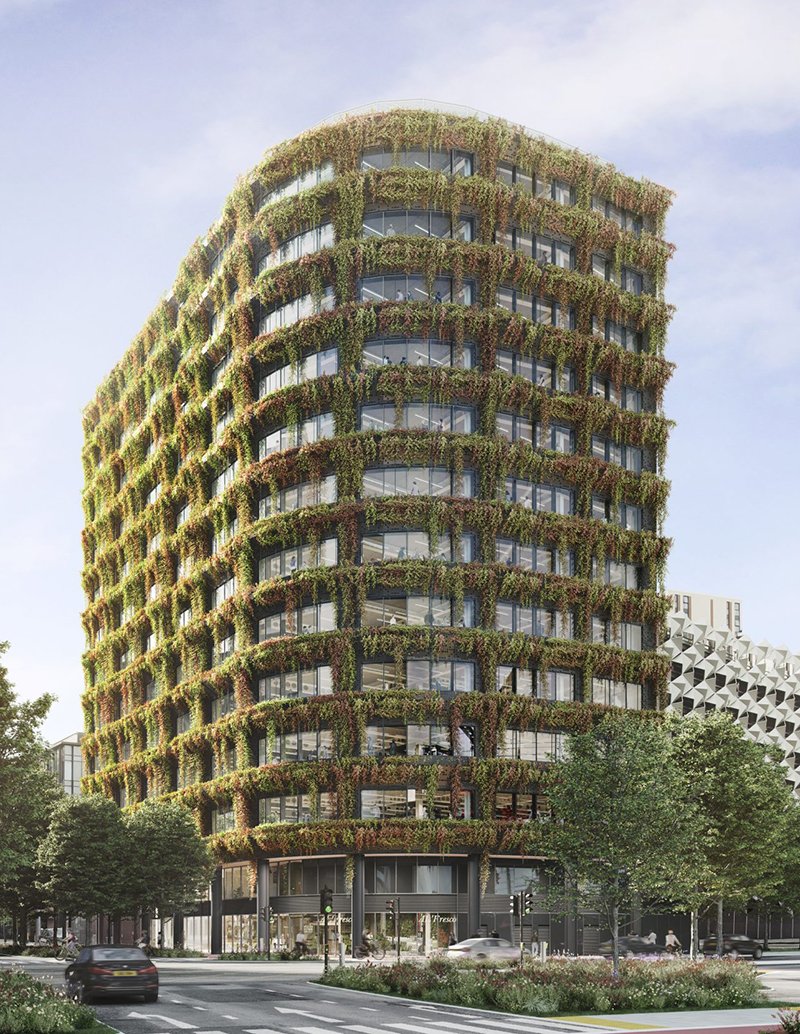Global solutions, helping to shape our future buildings
The need for global sustainability cuts across all cultures. How different climates and resources are managed sustainably varies around the world, with varying degrees of success. I was able to see some of these innovative methods during a career break with Mainer Associates. The following article looks at the sustainable practices I saw in Singapore and the lessons we can take back to the UK.
Written by
Edward Haynes
Sustainability Consultant
To contact please email:
edward.haynes@mainer.co.uk
A break from Sustainability?
I started at Mainer in 2021, working primarily on Life Cycle Analysis and BREEAM projects, with a particular interest in whole life carbon assessments. During this time I have had the opportunity to work on some great projects including The Eden (New Bailey) in Salford and 11 & 12 Wellington Place in Leeds. During a break in my career as a sustainability consultant, I was able to travel around South East Asia and Australia, which allowed me not only to experience other cultures, but also to see how the sustainable approach is viewed in different countries.
Singapore was a standout destination as it's a country that maximises sustainable infrastructure and integrates low zero carbon technologies wherever possible, prioritising green spaces and green buildings. This is largely due to the country's national interest in sustainable development, and its commitment to achieving the UN's 2030 Sustainable Development Agenda and the Paris Agreement.
What Is The Singapore Green Plan 2030?
The Singapore Green Plan 2030, or the Green Plan, is a whole-of-nation movement to advance Singapore’s national agenda on sustainable development.
Some targets of the ‘Green Plan’ include:
1. Developing over 130 ha of new parks and enhance around 170 ha of existing parks with more lush vegetation and natural landscapes.
2. Green 80% of Singapore’s buildings (by Gross Floor Area) by 2030
3. Achieve 75% mass public transport (i.e rail and bus) peak-period modal share.
4. 80% of new buildings (by Gross Floor Area) to be Super Low Energy buildings from 2030
5. Plant 1 million more trees
Greening of buildings effortlessly integrated
While in Singapore, the following projects really caught my eye for their uniqueness and innovative approach to sustainability that promotes biodiversity.
Gardens by the Bay
With 500,000 different species of plants and 11 'super trees', the Gardens really captures the effort to integrate sustainability between the built and natural landscape. Behind the scenes, both projects also use low/zero carbon (LZC) technologies such as solar power, biomass boilers and water-saving fittings.
Changi Airport
The airport is a welcoming destination for travels with the focus on green foliage (over 600,000 plants), natural light set against a backdrop of environmental targets to reduce electricity consumption, optimise and increase recycled water and plant trees. The airport is committed to zero carbon growth by 2030.
ParkRoyal Hotel
The ‘Garden in a Hotel’ literally grows into the Singapore skyline. The hotel took a 'rejuvenate' rather than a 'rebuild' approach to improving the hotel, saving over 51,300 tonnes of carbon dioxide. As well as the 'usual' green innovations such as energy management, water efficiency and 210 solar panels on the rooms, the hotel is also promoting unique innovations such as the 150m urban farm, which provides 20% of the hotel's food supply.
As you can see from the attached examples, building greening and LZC technologies are effortlessly applied in the central business district and surrounding areas. These approaches to sustainable infrastructure have long been in place in Singapore and are becoming more widespread in the UK, with ambitious targets being set across all business sectors:
UK wide ambition of planting 30,000 hectares of new woodland annually from May 2024, and the statutory target of reaching 16.5% tree and woodland cover by 2050.
Aim to generate 40% of UK electricity from renewable sources by 2030.
Net zero carbon emissions by 2050
How did Singapore get here?
Singapore has long had green development at the forefront of its development strategy, and in 2005 introduced a 'Green Mark Scheme' to rate all buildings based on their environmental impact and performance (similar to BREEAM). This has encouraged innovative design and the integration of renewable energy sources such as rainwater harvesting, solar tubes for hot water and solar panels to power the country. For Singapore, this has contributed to 'green growth' through green finance, carbon services, trading and sustainable tourism, as well as a high quality of life for its people.
What sustainable lessons can we learn?
Singapore is a great example of how to integrate sustainability into business and infrastructure development, and the UK can learn from what is widely regarded as the greatest success story for a country's sustainability ambitions.
Manchester, where Mainers is headquartered, has some great examples of similar innovative techniques being used, including:
BeeNetZero in Manchester
Are encouraging a ‘rooftop revolution’ helping businesses figure out the logistics of solar, establish the business case and decide whether if it’s the right low zero carbon technology to use.
Click Bee Net Zero logo to go to their website (opens new window)
Manchester Bee Network
Combining and upgrading bus, tram, train and cycling infrastructure to encourage usage of sustainable transport.
Click Bee Network logo to go to their website (opens new window)
Eden New Bailey, Manchester.
Seeking to achieve 5.5-star NABERS UK rating and the largest green wall in Europe.
The Eden in Salford was a shell of a building when I started working on the project before my travels, and now it is nearly covered with 350,000 plants to create a living wall that is the largest in Europe.
Not just for tropical climates, this living wall provides real environmental benefits by removing toxins from the atmosphere, increasing biodiversity, providing habitats for these species and improving the thermal performance of the building. The living wall also contributes to energy efficiency, a key reason why the building is aiming to achieve a 5.5 star NABERS rating, the first of its kind in the UK.
The Eden building is an example of a success story where sustainability was at the forefront of the building's design specification, reflecting many of the approaches Singapore has taken in its developments.
Mainer is currently working on a wide range of projects to
create the next generation of sustainable development.
To learn more about our recent projects,
please visit our portfolio of projects or get in touch
Please click below for more information on Mainer’s Services:

















